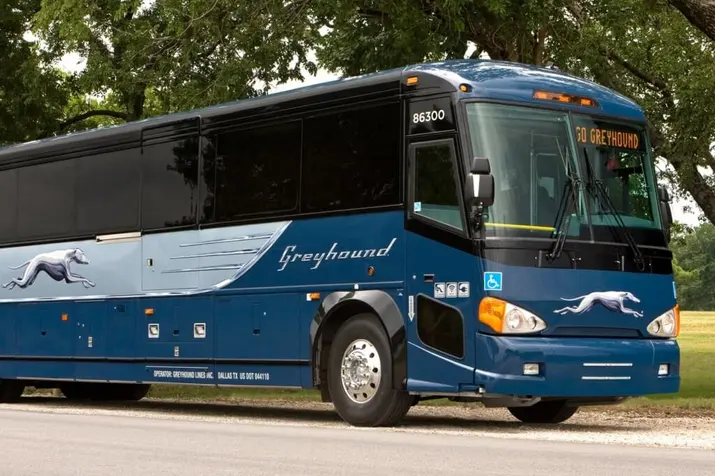Home > Undefeated Greyhound Bus Accident Lawyers
Undefeated Greyhound Bus Accident Lawyers

If you or a loved one were injured in a Greyhound bus accident, you deserve a winning legal team. At Zehl & Associates, our undefeated Greyhound bus accident lawyers have recovered billions for clients nationwide, including the largest verdicts and settlements in history. Call (713) 491-6064 today to schedule a free consultation.
We are committed to holding negligent bus companies accountable and securing the compensation our clients need to rebuild their lives.
Table of Contents
- Why Choose Zehl & Associates for Help After a Greyhound Bus Accident?
- What Is My Bus Accident Case Worth?
- What Types of Damages Can Bus Accident Victims Recover?
- How Long Do I Have To File a Bus Accident Lawsuit?
- How Much Does It Cost to Hire a Bus Accident Lawyer?
- What Causes Greyhound Bus Accidents?
- What Should I Do After a Bus Accident?
- Common Bus Accident Injuries
- Do I Need a Lawyer After a Greyhound Bus Crash?
- Bus Accident Statistics
- Contact Our Undefeated Greyhound Bus Accident Lawyers for a Free Consultation at (713) 491-6064 or by Clicking Here
Why Choose Zehl & Associates for Help After a Greyhound Bus Accident?

A Greyhound bus crash often results in serious injuries, mounting medical bills, and a long road to recovery. But while you’re left to deal with the aftermath alone, Greyhound is focused on one thing: protecting its bottom line. The company rarely accepts responsibility — even when the evidence is clear — and it will stop at nothing to pay you as little as possible for your injuries and losses.
At Zehl & Associates, we understand how Greyhound operates after a crash. We know how to combat their tactics and fight for the justice and maximum compensation you deserve.
Having successfully represented over 1,000 bus crash victims across the U.S., our attorneys have not only won against Greyhound time and again, we have secured the largest and most substantial recoveries ever obtained against the company on behalf of our clients.
Our results speak for themselves:
- #1 largest verdicts and settlements in Greyhound’s history and in the U.S.
- $1 Billion won for clients nationwide
- Forced critical safety changes at Greyhound and across the bus industry as a result of our litigation
If you or a loved one were injured in a Greyhound accident, don’t wait. Contact our undefeated personal injury lawyers for a free, no-obligation consultation (713) 491-6064.
What Is My Bus Accident Case Worth?
The value of your Greyhound bus accident claim will depend on several factors, including:
- The severity of your injuries
- Whether you will suffer a long-term disability or impairment
- The cost of your medical treatment
- The extent of your lost income and whether you can return to work
- Your physical and emotional pain and trauma
- Whether you share any fault for the bus collision
Our personal injury attorneys will thoroughly evaluate your case to determine its full value and pursue maximum compensation on your behalf.
What Types of Damages Can Bus Accident Victims Recover?
Victims of bus crashes may be entitled to compensation for their economic and non-economic damages.
Economic damages are the financial losses stemming from your accident and injuries, including:
- Medical bills
- Future medical expenses
- Physical therapy
- Lost wages and benefits
- Reduced earning potential
- Property damage
- Out-of-pocket expenses
Non-economic damages are the non-monetary, subjective losses you’ve endured, such as:
- Pain and suffering
- Emotional distress
- Permanent disability
- Scarring or disfigurement
- Reduced quality of life
If you lost a loved one in a fatal bus accident, you may be entitled to compensation through a wrongful death claim. In that case, you can seek recovery for funeral expenses, lost financial support, loss of consortium, and more.
Our Greyhound bus accident attorneys will help you identify and calculate the full extent of your damages.
How Long Do I Have To File a Bus Accident Lawsuit?
Every state has a deadline for filing personal injury lawsuits, known as the statute of limitations. The time limit – generally ranging from one to six years – varies depending on the jurisdiction.
It’s essential to consult an experienced personal injury lawyer as soon as possible after a bus accident. For one, you need to determine the deadline for your unique case.
Additionally, it’s highly beneficial for your attorney to start investigating and collecting evidence right away. This will lead to a stronger case and more money in your pocket.
How Much Does It Cost to Hire a Bus Accident Lawyer?
The bus crash attorneys at Zehl & Associates work on a contingency fee basis. This means you pay nothing upfront – no retainers, hourly rates, or out-of-pocket legal fees. Instead, our firm only gets paid if we win your case. If we don’t recover compensation for you, you owe us nothing.
This approach ensures that every client has access to top-tier legal representation, regardless of their financial background. Additionally, our interests are aligned with yours from day one: we’re only successful if you are.
We’re committed to fighting for the maximum recovery in every case. That’s why so many of our clients trust us to handle their most important legal matters.
What Causes Greyhound Bus Accidents?
Despite being responsible for the safety of many passengers at any given time, bus drivers still make mistakes, leading to serious accidents. However, driver error isn’t the only cause of these crashes. Greyhound Lines, Inc., mechanics, and even manufacturers of bus parts can also contribute to accidents.
Some of the common causes of bus crashes include:
- Driver fatigue
- Speeding
- Distracted driving
- Driving under the influence
- Unsafe turns or stops
- Tailgating
- Changing lanes without checking blind spots
- Failure to follow bus industry rules and regulations
- Negligent hiring by the bus company
- Inadequate training
- Failure to properly maintain the bus
- Defective vehicle parts (e.g., faulty brakes or tires)
- Road hazards
Our experienced bus accident lawyers will launch a full investigation into what caused your Greyhound crash. That way, we can hold every liable party accountable for your injuries.
What Should I Do After a Bus Accident?
The aftermath of a Greyhound bus accident can be overwhelming. Knowing the right steps to take can protect your health, preserve crucial evidence, and strengthen your legal claim.
- Report the Accident to the Authorities: Make sure the crash is reported to local law enforcement or the highway patrol. Request a copy of the accident report, which will contain important facts about the incident.
- Gather Evidence: If you can, take photos of the accident scene, the bus, traffic conditions, and your injuries. Get contact information from witnesses and other passengers. Write down everything you remember about the crash to document important details you may forget.
- Get Medical Attention Immediately: Even if you feel okay, seek medical care. Internal injuries or concussions may not be immediately obvious but can worsen without treatment. Additionally, your medical records will be vital evidence for your personal injury claim.
- Do Not Sign Anything from Greyhound or Insurers: You may be contacted by Greyhound’s legal team or insurance adjusters. Do not provide statements, sign documents, or accept a settlement without consulting an attorney.
Contact an attorney before speaking with Greyhound representatives or an insurance company. We can communicate with these parties on your behalf, protect your legal rights, and ensure that you aren’t taken advantage of.
Common Bus Accident Injuries
Greyhound accidents often involve multiple victims and catastrophic consequences. Some of the most common bus accident injuries include:
- Whiplash
- Neck injuries
- Concussions and other traumatic brain injuries
- Spinal cord injuries
- Back injuries
- Internal bleeding
- Broken bones
- Lacerations and other soft tissue injuries
- Loss of limbs
- Burns
- Crushing injuries
- Chest injuries
- Catastrophic injuries
Whether you were a Greyhound passenger or riding in another vehicle, the impact of a bus crash can be devastating. Let our personal injury attorneys pursue the compensation you deserve for your medical treatment, expenses, and mental trauma.
Do I Need a Lawyer After a Greyhound Bus Crash?
Yes. Bus accident claims are complex and involve powerful defendants like Greyhound and large insurance companies.
Our skilled attorneys will:
- Preserve evidence, including bus surveillance footage and driver logs
- Hire accident reconstruction and medical experts to strengthen your personal injury case and prove liability
- Handle all communications with insurers and opposing counsel
- Negotiate aggressively to maximize the value of your claim
- Take your case to trial if the other side refuses to offer a settlement that fully compensates you for your damages
It isn’t easy to establish negligence in a bus accident case. However, with the right legal representation, you drastically increase your chances of a fair outcome. Call the team at Zehl & Associates to get our undefeated advocates on your side.
Bus Accident Statistics
According to the Federal Motor Carrier Safety Administration (FMCSA), there were 15,214 bus crashes reported across the United States in 2024, leading to:
- 14,157 injuries
- 237 fatalities
Around 47% of these collisions were “towaway crashes,” meaning the bus was so damaged that it had to be transported from the scene by a tow truck.
Preliminary data indicates that 46 people have died in bus accidents as of May 2025. Over 3,700 people sustained injuries in these incidents.
Contact Our Undefeated Greyhound Bus Accident Lawyers for a Free Consultation at (713) 491-6064 or by Clicking Here
If you or a loved one has been injured in an accident with a Greyhound bus or another commercial vehicle, Zehl & Associates is here to help. Our undefeated bus accident attorneys have recovered over $1 billion for our clients. With the resources and experience to take on the largest bus companies in the country, we don’t just win — we set records.
Call us now at (713) 491-6064 or click here to schedule your free initial consultation. We are available 24/7, and you pay nothing unless we win your case.
Some of our Recent Bus Accident Settlements and Verdicts:
FREE CASE REVIEW
Fill Out the Form Below for a Free Case Review with our Undefeated Personal Injury Lawyers
All communications are private and confidential. This site is protected by reCAPTCHA and the Google Privacy Policy and Terms of Service apply.